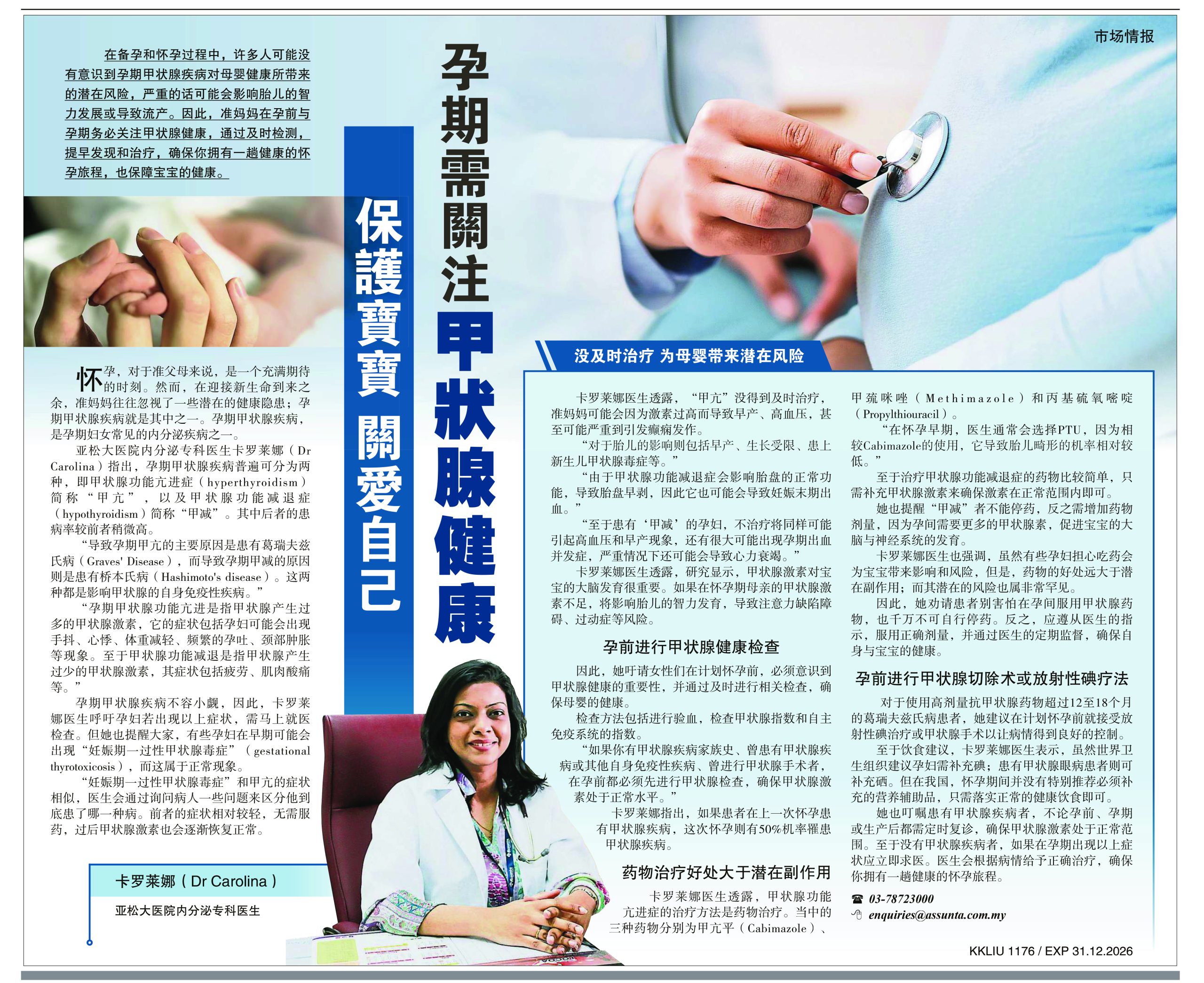Today, laser surgery plays a leading role in minimally invasive techniques in ENT surgeries, particularly in the treatment of aerodigestive tract malignancies where the aim is to preserve the organ. Because of the precise cutting and superficial well delineated effect of the laser, it is widely used in head and neck region. It is used for incision, excision, and vaporization of tissue.
Laryngology
In Laryngology lasers are most often used for delicate phonatory surgery (vocal cord nodules polys, granuloma, cyst, papillomas), laryngeal hamangiomas, vascular malformation of the larynx, precise excision of carcinoma in situ or early (T1) tumors, vaporization of bulky obstructing carcinoma of the upper airway, bilateral recurrent laryngeal nerve palsy and laryngeal stenosis.
Recurrent respiratory papillomatosis affects mucous membranes of the respiratory tract. It is characterized by multiple and recurrent squamous papillomas, causing hoarseness and respiratory obstruction. The most common site is the larynx. Although no treatment has been successful in curing this disease, spontaneous remission can occur. Frequent excisions with laser are recommended to try to avoid tracheotomy and to permit to develop good phonation, preserving normal vocal cord anatomy as much as possible.
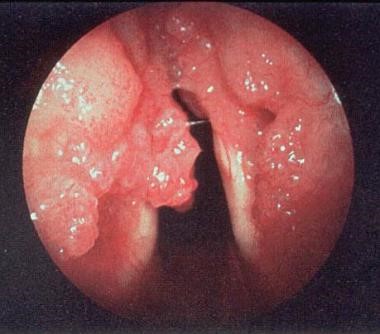 Recurrent respiratory papillomatosis
Recurrent respiratory papillomatosis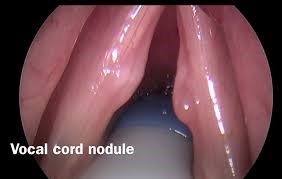 Vocal cord nodule
Vocal cord nodule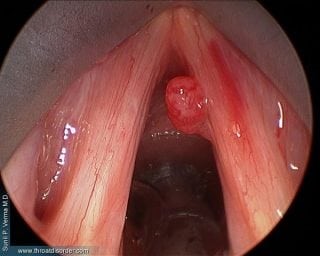 Vocal cord polyp
Vocal cord polyp
Laryngomalacia is the most common cause of chronic stridor in infancy, in which the soft, immature cartilage of the upper larynx collapses inward during inhalation, causing airway obstruction. 20% requires surgical excision, laser microsurgery has become possible to avoid tracheostomy in severe laryngomalacia.
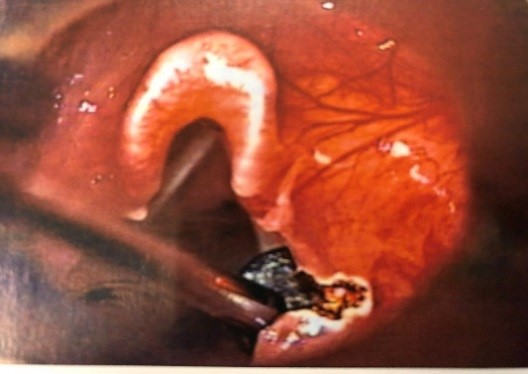 Shortened aryepiglottic fold divided with laser
Shortened aryepiglottic fold divided with laser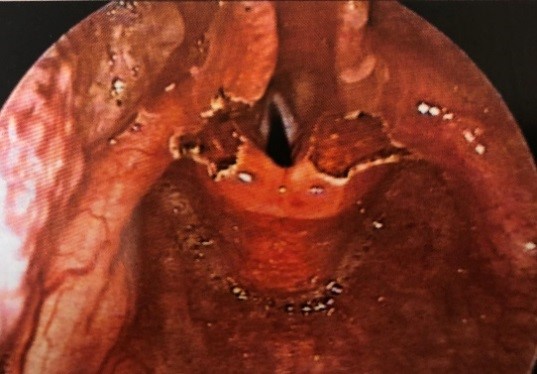 Shortened aryepiglottic fold divided with laser
Shortened aryepiglottic fold divided with laser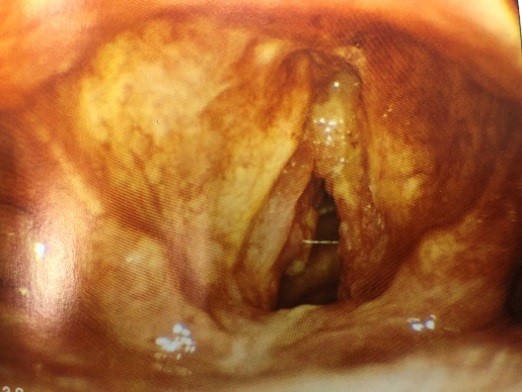 Bilateral carcinoma of glottis involvement anterior commissure, transoral laser microsurgical partial resection of glottis
Bilateral carcinoma of glottis involvement anterior commissure, transoral laser microsurgical partial resection of glottis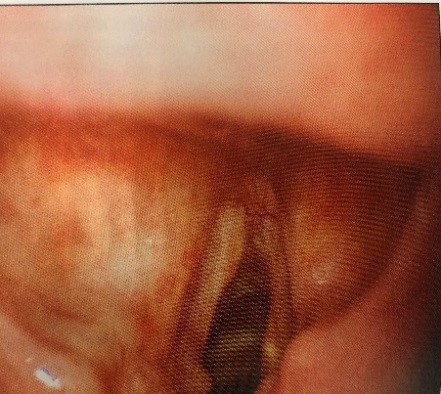 3months post-surgery
3months post-surgery
Rhinology
Chronic nasal airway obstruction is one the most frequent symptoms encountered by ENT Surgeons. The majority of these patients suffer from hypertrophied inferior turbinates. Endo nasal laser surgery is performed under local anaesthesia as an outpatient.
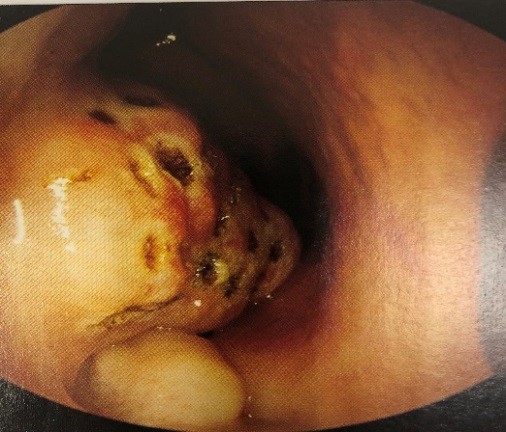
Single spots at the head of the turbinate following laser surgery
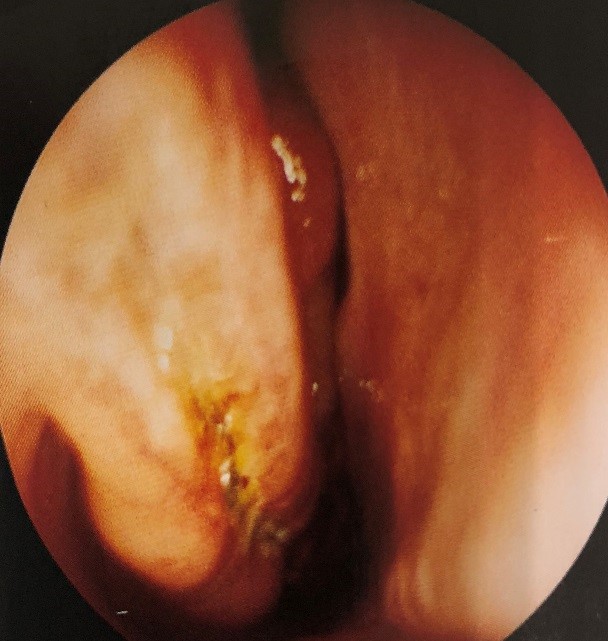 Laser treatment, a slit like wound
Laser treatment, a slit like wound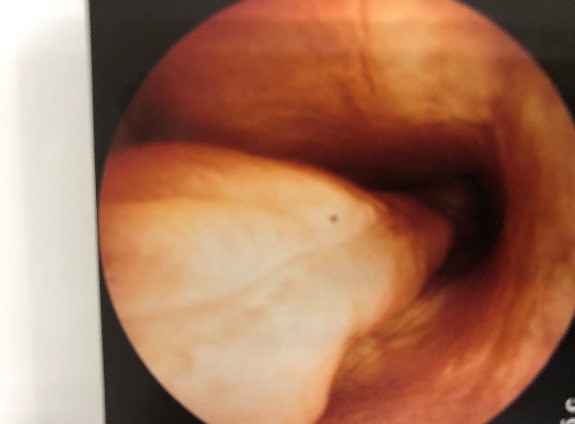 Several weeks after laser treatment the turbinate is reduced in size
Several weeks after laser treatment the turbinate is reduced in size
Laser is used in patients with epitaxis secondary to hereditary hemorrhagic telangiectasia, diseases of the paranasal sinuses, chonal atresia and stenosis and diseases in nasopharynx.
Otology
Otosclerosis is a hereditary ear condition whereby the third middle ear bone, known as the stapes, becomes stuck and cannot vibrate freely, as it is intended to do in order to transmit sound into the inner ear. This leads to a form of hearing loss called a conductive hearing loss. Stapedotomy is a procedure that aims to replace the stapes bone with a prosthetic.
Laser stapedotomy is most common treatment for otosclerosis. 85% of patients will have a significant hearing improvement.
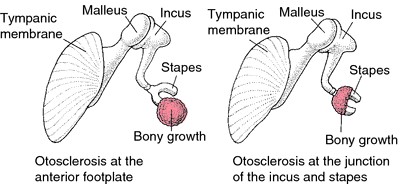
Snoring with obstructive sleep apnea
Laser widely used in surgical removal of huge enlarged tonsils with uvula and partial resection soft palate (uvulopalatopharyngoplasty). The laser treatment tighten the bulky tissue at the roof of the mouth and near the tonsils that flaps around and causes constriction of the air passage.
Benign Diseases of base of the tongue and vallecular
Congenital benign lesions of upper digestive tract, large cyst of valleculla or base of tongue, can produce a compromise airway.
Malignant Diseases
Carcinoma of oral cavity, oropharynx and hypopharynx.
Advantages of Laser Surgeries
- Minimal invasive technique
- Minimal bleedings and atraumatic
- Good wound healing with uncomplicated follow-up care
Whenever an incision is made in the tissue with a scalpel blade, inflammation begins in the affected tissue. Because the laser beam effectively cauterizes the lymphatic system, there is much less post-operative swelling. Laser energy does not crush, tear, or bruise tissue since there is no physical contact with the tissue. Post-operative recovery is faster and the patient experiences more comfort.
The postoperative pain is less. Laser seals nerve endings as it “cuts”, require less anaesthesia during the operation,
The laser seals small blood vessels as it cuts, reducing or completely eliminating the need for any other bleeding control measures. This means less time is required for the surgical procedure and, usually, reduced need for anaesthesia.
The laser can remove diseased tissue without affecting surrounding healthy tissue. Not only does the blood-free cutting benefit the patient, it also provides a clear, dry surgical field for the surgeon. The lack of bleeding improves the surgeon’s visual control of the procedure because he can clearly see the different tissue layers. As a result, the surgeon is able to enhance surgical precision.
Conclusion
Laser-assisted surgery is a relatively new concept for achieving potentially eliminates more morbid.
Related Articles

Exploring The Intersection of ENT Health and Diving Medicine: A Guide for Healthcare Professionals
Read More »